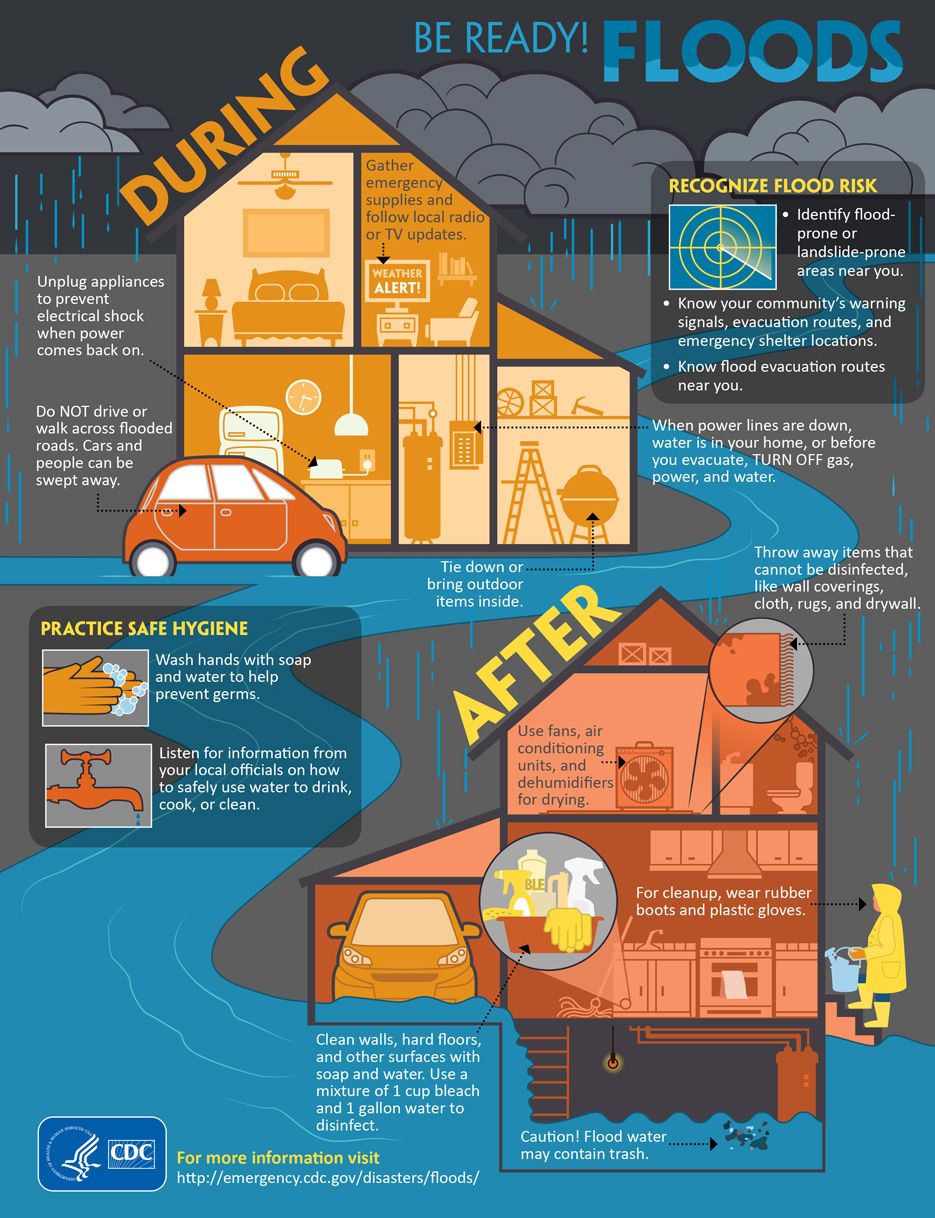Severe Weather Awareness: Staying Safe During Floods

Table of Contents
Recognizing Flood Warning Signs and Understanding Risk Levels
Identifying Potential Flood Hazards
Flooding can occur in various forms, including riverine floods (overflowing rivers), flash floods (sudden, rapid flooding), and coastal floods (storm surges). Recognizing potential flood hazards is the first step towards safety. Common indicators include:
- Heavy and persistent rainfall: Prolonged periods of intense rain significantly increase the risk of flooding.
- Rapidly rising water levels in rivers and streams: Observe changes in water levels; even a small increase can be a warning sign.
- Overflowing storm drains and sewer systems: Blocked drains indicate the system is struggling to cope with the water volume.
- Official flood warnings and watches issued by your local meteorological agency: Pay close attention to these alerts; they are crucial for timely action.
Understanding Flood Risk Levels
Weather services use different alert levels to communicate the severity of a potential flood. Understanding these levels is crucial for appropriate response.
- Flood Watch: Conditions are favorable for flooding. Stay informed and be prepared to take action.
- Flood Warning: Flooding is occurring or is imminent. Take immediate action to protect yourself and your property.
You can find these alerts on websites like the National Weather Service (for the US) or your country's equivalent meteorological agency. These websites often provide detailed flood forecasts and river level information.
Assessing Your Personal Flood Risk
Determine your personal risk by considering several factors:
- Location: Are you in a flood plain or near a body of water prone to overflow?
- Proximity to waterways: The closer you are to rivers, streams, or the coast, the higher your risk.
- Local history: Check if your area has experienced flooding in the past. Consult online flood maps provided by your local authorities or insurance companies. These maps can help you assess your specific property's flood risk.
Building a Flood Preparedness Plan
Creating a Family Emergency Plan
A comprehensive plan is vital. Establish:
- Communication protocols: Designate a primary contact person outside the affected area.
- Evacuation routes: Identify multiple escape routes from your home and neighborhood. Know the location of the nearest designated evacuation shelter.
- Meeting places: Determine safe meeting points inside and outside your home.
Assembling a Flood Emergency Kit
Your kit should include:
- Water: At least one gallon per person per day for several days.
- Food: Non-perishable items that require no cooking or refrigeration.
- Medications: Sufficient supply of any essential medications.
- First-aid kit: Bandages, antiseptic wipes, pain relievers.
- Flashlight and extra batteries: Essential for navigating in darkness.
- Battery-powered radio: To stay informed of updates.
- Important documents: Copies of insurance policies, identification, and medical records (stored in waterproof bags).
Protecting Your Property
Take steps to mitigate flood damage:
- Elevate valuable items: Store important possessions on higher shelves or floors.
- Install flood barriers: Consider sandbags or commercially available flood barriers.
- Purchase flood insurance: This is crucial protection, even if you are not in a high-risk area. Flood insurance is often separate from homeowner's insurance. Contact your insurance agent to learn more.
Staying Safe During a Flood: Evacuation and Immediate Actions
Evacuation Procedures
When a flood warning is issued or you observe rising water levels, evacuate immediately.
- Follow official instructions: Obey instructions from emergency services and local authorities.
- Use designated routes: Avoid flooded roads and low-lying areas.
- Seek assistance: If you need help evacuating, contact emergency services or local aid organizations.
Actions to Take if Caught in a Flood
If you are caught in a flood:
- Seek higher ground: Move to higher floors of a sturdy building or climb to elevated areas.
- Avoid contact with floodwater: Floodwater can be contaminated with sewage and other hazardous materials.
- Stay away from downed power lines: These pose a serious risk of electrocution.
If you are driving and encounter floodwaters, turn around, don't drown. Even a small amount of moving water can sweep a vehicle away.
Post-Flood Safety
After the flood:
- Clean up safely: Wear protective gear and be aware of potential hazards like broken glass and contaminated water.
- Avoid electrical hazards: Do not touch electrical equipment until it has been checked by a qualified electrician.
- Report damage: Contact your insurance company and local authorities to report any damage to your property.
Conclusion: Prioritize Severe Weather Awareness for Flood Safety
Effective preparation is key to surviving and mitigating the impact of flooding. Creating a comprehensive flood preparedness plan, assembling an emergency kit, and understanding flood warning signals are crucial steps in ensuring your safety. Remember, Severe Weather Awareness: Staying Safe During Floods is an ongoing process, not just a one-time event. Create your personal flood safety plan today. Share this article with your friends and family to help spread awareness and build stronger community resilience against the devastating effects of flooding. Use the resources and links provided throughout this article to further enhance your understanding of flood safety.

Featured Posts
-
 Guide Pour Mieux Comprendre Les Gens D Ici
May 26, 2025
Guide Pour Mieux Comprendre Les Gens D Ici
May 26, 2025 -
 Saksikan Live Race Sprint Moto Gp Inggris Pukul 20 00 Wib
May 26, 2025
Saksikan Live Race Sprint Moto Gp Inggris Pukul 20 00 Wib
May 26, 2025 -
 The Plight Of Idf Soldiers Held Hostage In Gaza A Look At Their Experiences
May 26, 2025
The Plight Of Idf Soldiers Held Hostage In Gaza A Look At Their Experiences
May 26, 2025 -
 F1 Drivers Press Conference Insights And Analysis
May 26, 2025
F1 Drivers Press Conference Insights And Analysis
May 26, 2025 -
 Sses Revised Spending Plan A 3 Billion Reduction In Investment
May 26, 2025
Sses Revised Spending Plan A 3 Billion Reduction In Investment
May 26, 2025
